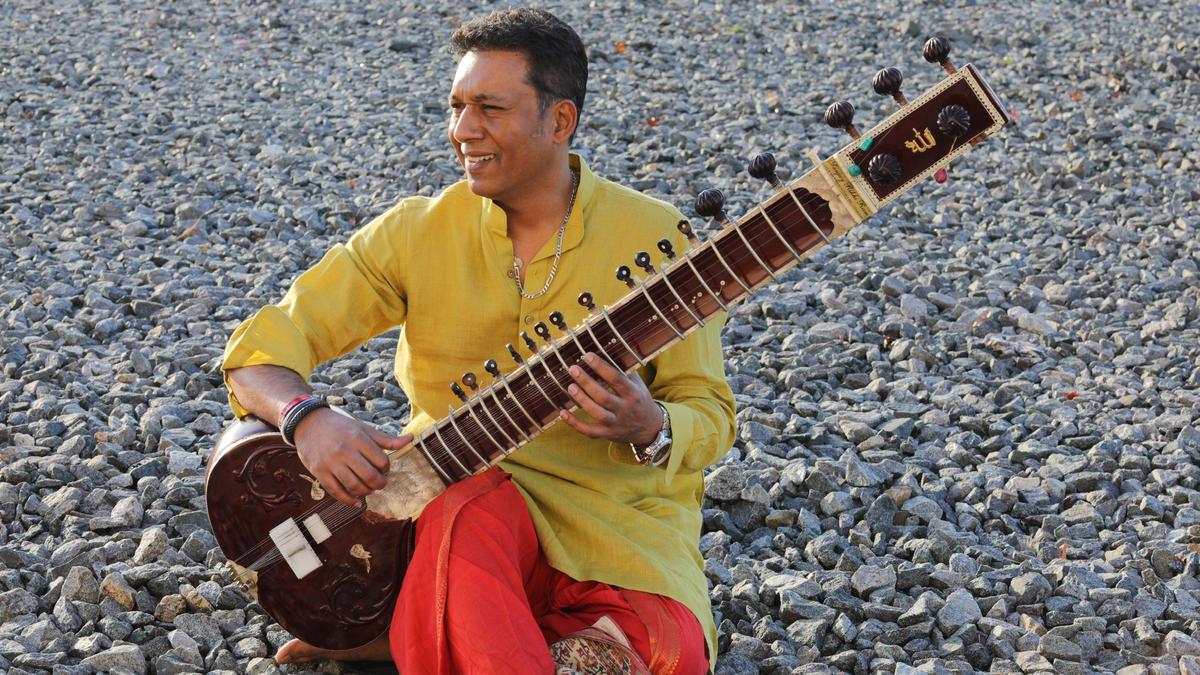This Republic Day, renowned sitarist Hidayat Khan, son of the renowned Ustad Vilayat Khan, will unveil his rendition of the national anthem. Over the years, many singers and instrumentalists have released their musical versions of ‘Jana Gana Mana’ on 15 August and 26 January, each time creating a deep resonance in the hearts of the listeners. Hidayat will be accompanied by Avirod Sharma on tabla.
In an interview, the sitar player talked about the emotional and creative inspiration behind the creation of this track.
How was the experience of working on this track?
For most of us, the national anthem brings back memories of our school days. Singing it in the morning meeting was part of the routine. But I started connecting with it in a different way when I was once invited to present it at an event in New York. And I realized how the values embodied in the national anthem have shaped the lives of not only people living in India but also people like me living abroad.
Releasing this work on Republic Day is symbolic. Do you have a specific message to convey?
In my music, I always try to tell a story. Today’s world is very different from the one I grew up in, yet India is a unique blend of cultures, languages and religions that co-exist and celebrate each other. I wanted Jana Gana Mana to capture that feeling – to frame it in classical music, starting with a traditional aalap, followed by a rhythmic section reflecting the vibrant energy and chaos of India. The piece ends with my solo rendition of the national anthem, which symbolizes that we are united as a nation despite our differences. For me, this is the essence of ‘Jana Gana Mana’ – it is the voice of India, a collective identity that transcends borders.
What’s special about your version?
Most of the earlier versions were a mix of different styles, this is entirely from the perspective of Indian classical music. Once this concept was clear, everything fell into place. I invited Avirodh to the studio, and we worked together without scripting anything beyond the national anthem. Everything else was improvised without any editing – just like a live Indian classical performance. The sitar reflects the emotions in the song but does not imitate the exact tune. It is abstract, yet it slowly builds to the national anthem’s powerful conclusion.
‘Jana Gana Mana’ is a simple raga, was it challenging to adapt it to a classical instrument like sitar?
Sometimes, the most iconic music is also the simplest. What I find beautiful about ‘Jana Gana Mana’ is how it resonates on different levels – whether sung by a child or presented in a more complex arrangement. I did not face any challenges in adopting it. I had a fantastic team around me, from Hrishi, who helped visualize the video, to Naad, who helped create the track. We focused on keeping the sitar and tabla organic, maintaining their purity while integrating them into the arrangement.
Hidayat with father Ustad Vilayat Khan. Photo Courtesy: The Hindu Archives
How does your family’s musical heritage influence your approach, especially in projects like this? Does it play a role in your creative process?
Who I am musically and personally has been shaped by both my parents. Of course, my father was a major influence on my musical path, but my mother’s sensibilities shaped me in ways I didn’t even realize until later. My father always insisted that music should reflect life’s experiences – the joys and struggles. As a musician, that’s how I communicate: through the emotions and stories that life has given me. My legacy is not just about the past; It’s about continuing that journey with the experiences I’ve gained.
How do you integrate your skills as a sitarist and singer?
We were taught to sing before playing any instrument and even today, when I make or practice music, the first thing I do is tune it. In the Gaikai style, the sitar essentially becomes the voice – it must convey the same inflections, dynamics and emotions that a singer does. When you sing, your voice reflects your mood – angry, happy, calm – which I try to replicate on the sitar. For example, sitar playing in our gharana is known for its dynamic tonal range, making it far more expressive than a monotone sound.
Coming from a family of musicians, what life philosophy have you inherited apart from musical talent?
The most important lesson I learned growing up is humility. I have been fortunate to meet many great musicians and what stood out to me the most was their constant desire to learn. Even as legends go, they always felt there was more to discover. That mentality has stuck with me – no matter how far I go in my career, I know it’s an ongoing journey.
How do you see the future of classical music? Is there any hope for instruments like sitar?
There has been a significant increase in the number of sitar players. While there are challenges, especially with misinterpretation of music in the digital age, I see a growing interest in classical music, especially among young people. However, there is a real need for greater support from corporates, government and media to ensure that musicians who preserve the purity of classical traditions get due recognition and support. Although the future holds both opportunities and challenges, I am still optimistic – there is so much talent out there, and the desire to keep classical music alive is stronger than ever.
published – January 21, 2025 04:01 PM IST
